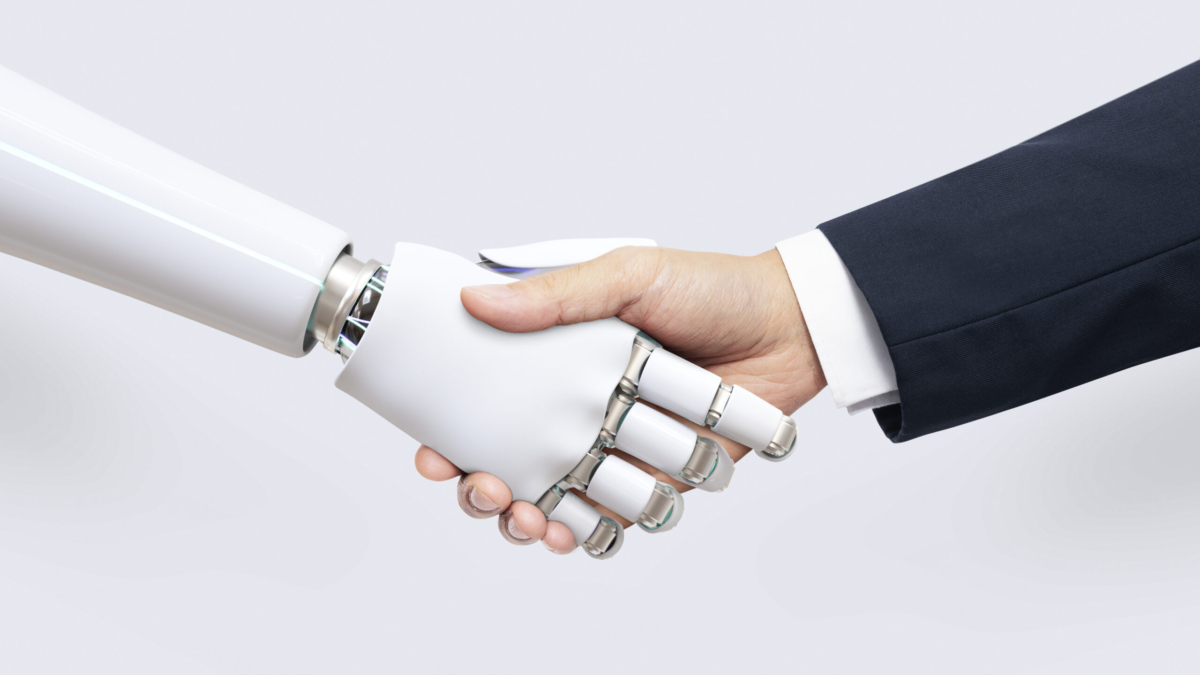As the digital world evolves at an unprecedented pace, automation has shifted from being optional to becoming a core business priority. Technologies like Robotic Process Automation (RPA), Artificial Intelligence (AI), and Machine Learning (ML) are driving digital transformation across industries. But while these tools deliver speed and accuracy, they often fall short when context, creativity, or human judgment is needed.
This gap is where human robot collaboration becomes essential. By combining bots’ efficiency with human adaptability, organizations can build intelligent, resilient, and human-centric automation strategies that scale with business needs.
What Is Human and Robot Collaboration?
Human and robot collaboration refers to a hybrid automation model where digital tools—such as software bots, AI engines, and ML algorithms—work alongside human teams within a single, unified workflow. Rather than replacing the workforce, this model augments it.
Bots handle structured, rule-based tasks like invoice matching, data processing, or report generation. Humans focus on unstructured tasks requiring analysis, empathy, or real-time decision-making. This synergy aligns with human-in-the-loop automation, helping enterprises maintain control and flexibility.
Key Benefits of Robot Human Collaboration
Enterprise-Scale Operational Efficiency
With successful robot human collaboration, routine and repetitive tasks are handled by bots, freeing human teams to concentrate on strategic initiatives, creative problem-solving, and high-value activities. This model accelerates cycle times and reduces operational overhead without expanding headcount.
Improved Accuracy and Regulatory Alignment
Digital bots execute tasks with high precision, minimizing human error and standardizing workflows. Human oversight ensures compliance with dynamic industry regulations—especially critical in finance, healthcare, and public services.
Enhanced Employee Productivity and Retention
With automation managing routine work, employees engage in more meaningful tasks. This shift drives higher productivity, improves morale, and reduces turnover—key factors for long-term organizational growth.
Better Customer Engagement and Response Time
In a customer-centric automation strategy, bots handle FAQs or service requests instantly, while humans manage escalations or sensitive cases. The result: faster service, personalized experiences, and increased customer loyalty.
Built-in Business Resilience and Flexibility
Human robot collaboration enables organizations to respond quickly to change. During periods of high demand, bots handle increased workloads, while human teams step in to manage exceptions and complex scenarios. This hybrid capability ensures uninterrupted workflows and robust business continuity.
Common Challenges—and How to Solve Them
• Legacy System Limitations
Outdated systems often hinder integration. Enterprises should adopt modular, API-first automation platforms that connect easily with ERP, finance, and vendor systems.
• Unclear Human-Bot Role Mapping
Unclear division of responsibilities can create inefficiencies. Clearly define roles, handoffs, and exception protocols to maintain a smooth human and robot collaboration workflow.
• Employee Resistance to Automation
Concerns about job security can stall adoption. Building trust starts with clear communication, involving employees from the start, and providing opportunities for skill development. Designating automation advocates further promotes a collaborative work environment.
• Governance and Compliance Risks
Hybrid models require robust governance. Use platforms that offer audit trails, role-based access, and regulatory reporting to ensure data security and transparency.
• Measuring ROI of Hybrid Automation Models
Traditional ROI metrics don’t capture the full impact of robot human collaboration. Focus on blended automation KPIs like cycle time reduction, process uptime, accuracy rates, and employee satisfaction to evaluate effectiveness.
Conclusion:
Building a Human-Centric Automation Strategy
Human robot collaboration is not just an automation upgrade—it’s a strategic shift toward intelligent workflow design. By blending human insight with digital precision, enterprises can scale faster, stay resilient, and respond better to market shifts.
In a world moving toward adaptive, people-first technology, businesses that adopt human and robot collaboration strategies today will lead tomorrow. The future of automation isn’t just about efficiency—it’s about collaboration, agility, and continuous innovation.
-
1. What is human-robot collaboration in intelligent automation?
Human-robot collaboration is a hybrid model where software bots and AI systems work alongside humans to streamline workflows, reduce errors, and enable smarter decision-making.
-
2. How does HRC impact employee productivity and satisfaction?
By automating repetitive tasks, employees focus on high-value, strategic work. This increases job satisfaction, reduces burnout, and supports long-term talent retention.
-
3. Can HRC be integrated with legacy ERP systems?
Yes. API-first automation platforms are designed to integrate with existing ERP, finance, or vendor systems, making HRC adoption feasible without complete system overhauls.
-
4. What are the best metrics to measure ROI in human-robot collaboration?
Organizations should track cycle time reduction, task accuracy, process uptime, employee satisfaction, and customer service improvements to assess HRC performance.

